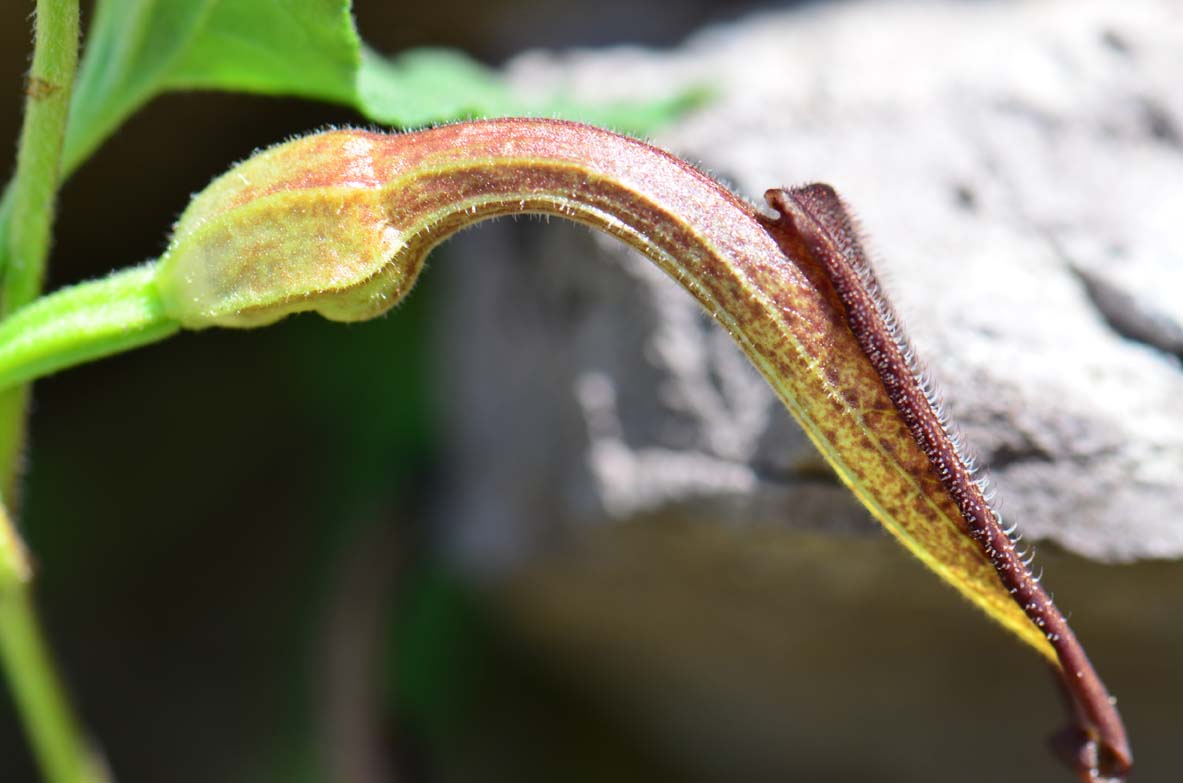|
Family: Aristolochiaceae |
Herbs or lianas , perennial. Stems erect, twining, or procumbent. Leaves alternate, 2-ranked (evident on young growth, becoming obscure with age in some species); true stipules absent; pseudostipules absent [present]; petiole sometimes very short. Leaf blade membranous to leathery. Inflorescences on new growth or on older stems, axillary, racemes or solitary flowers; bracts present. Flowers: calyx usually mixture of purple, brown, green, or red, bilaterally symmetric, tubular, usually bent or curved, 1- or 3-lobed, not fleshy, base with utricle (basal, inflated portion of calyx surrounding or containing gynostemium); tube narrowed, sometimes extended proximally as cylindric syrinx (tubular or ringlike structure at juncture of tube and utricle, projecting into utricle cavity) and distally as annulus (circular flange at juncture of tube and limb) on limb; corolla absent; stamens 5-6, adnate to styles and stigmas, forming gynostemium; ovary inferior, 3-, 5-, or 6-locular; styles 3, 5, or 6, connate in column. Capsule dry, dehiscent. Seeds flattened or rounded, sometimes winged. x = 6, 7, 8. Most European and tropical species of Aristolochia are believed to be pollinated by small flies attracted to the flowers by the fetid odors and purple-brown color. Flies enter the flower when the stigmas are receptive and are trapped until after the anthers dehisce (H. Solereder 1889, 1889b). No formal studies of pollination of the North American species have been reported. Many species of Aristolochia have been used in the treatment of snakebite; the treatment may or may not be effective. All species contain aristolochic acid, which is variously reported as tumor-causing or tumor-inhibiting (J. A. Duke 1985). The leaves of many species are eaten by pipe-vine swallowtail butterflies. The larvae eat leaves of these species and sequester aristolochic acid in their bodies, making them unpalatable to birds (W. H. Howe 1975).
FLOWERS: zygomorphic; sepals connate, enlarged and petal-like, often s-shaped or pipe-shaped, rarely straight; petals absent; stamens 5-6,; pistil 5- 6-carpelled, the ovary inferior. SEEDS flat, rounded, or some¬times winged. NOTES: 500 spp.; world-wide, temperate and tropical regions. (Greek: aristos = best + lochia = delivery). REFERENCES: Mason, Charles T., Jr. 1999. Aristolochiaceae. Ariz.-Nev. Acad. Sci. 32(1). Cal tubular, irregular, S-shaped or pipe-shaped and 3-lobed at the summit, or straight and with a single unilateral terminal lobe; pet none; stamens in ours 6; anthers sessile, adnate to the style; ovary inferior, 6-locular (in ours); style short and stout; stigma broad, with 6 (in ours) lobes or angles; fr a septicidal, lobed or angled capsule, with numerous compressed, horizontal seeds; herbs or woody vines, usually with broad, alternate, palmately veined lvs, and with small or large fls solitary or fascicled in the axils. 500, cosmop. Gleason, Henry A. & Cronquist, Arthur J. 1991. Manual of vascular plants of northeastern United States and adjacent Canada. lxxv + 910 pp. ©The New York Botanical Garden. All rights reserved. Used by permission. |


